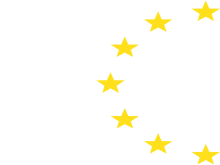The goal of this three-day training course is to provide a comprehensive introduction to the fundamentals of VTK and scientific visualization and data analysis with ParaView and Python scripting.
Overview - Visualizing your scientific results
Scientific visualization is the art of utilizing human visual cognition as a means to glean understanding and insight into scientific data, be it computed numerically or acquired by measurement. Together with data analysis, it is a key component of today’s scientific discovery process, in particular in the context of computational sciences, for all disciplines (electro-magnetics, fluid dynamics, structural mechanics, etc.), and applications as diverse as astrophysics, climatology, or engineering.
Paraview is a tool to visualize large and huge scientific datasets collected or produced in research, e.g. electromagnetics, fluid dynamics, structural mechanics, astrophysics, or climatology research. Once completed your simulation, visualization helps in understanding the results and in communicating them to others.
The visualization toolkit (VTK) is an open-source, C++ software library dedicated to data visualization, image processing, and computer graphics. Also offering Python and Java interfaces, it supports a broad class of visualization techniques for a variety of data and attribute types. Used extensively by thousands of users worldwide, it is the underlying visualization engine for ParaView, also an open-source, multi-platform, application designed to visualize and analyze data on a broad set of platforms, ranging from a single processor on a laptop to many thousands of cores on a high-performance computing cluster. Both VTK and ParaView has achieved global recognition in the scientific visualization community over the past couple of decades. ParaView in particular has made major inroads into today’s scientific research, as scientific dataset size and complexity have grown at a rapid pace and are continuing to do so.
Course description
The goal of this three-day training session is to provide a comprehensive introduction to (1) the fundamentals of VTK and (2) scientific visualization and data analysis with ParaView and Python scripting.
The course will begin with a full day dedicated to a thorough exposition of the key VTK concepts, focusing on those that are necessary to a better understanding of ParaView: in particular, the toolkit’s underlying data and execution models. It will then continue with a hands-on presentation of the ParaView visualization application. All important features of the graphical user interface of ParaView will be demonstrated, including data loading, data processing, parameter adjustment, and data interaction. The main visualization techniques such as cutting, clipping, contouring, probing, thresholding, culling, and “glyphing” will also be discussed and illustrated with multiple examples. This course will also explain how to generate visualization and analysis data in the form of processed data, rendered images, and animations.
The course will be concluded with a half-day bringing everything together by showing how ParaView can be extended and customized using the acquired VTK knowledge and a little bit of Python scripting. Attendees shall expect an exciting, interesting, and challenging course. They are encouraged to communicate in advance any specific requests, or topics of interest.
Prerequisites and content level
This course, taught by a computational scientist and developer with two decades’ worth of experience with both VTK and ParaView, as a user, developer, and team leader, is intended for an audience of computational as well as application scientists, engineers, post-docs, and students with a background or an interest in numerical simulation.
Some understanding of scientific computing and/or modeling concepts (geometry, meshes, data attributes) is necessary. Knowledge of statistics is not required but will be helpful, and the Python 3 language will be used for parts of the course. Course will be using ParaView 5.8 and Python 3 versions. Please ensure that you have correct set up when starting the course.
Lecturers
Dr. Philippe P. Pébaÿ, Eredio
